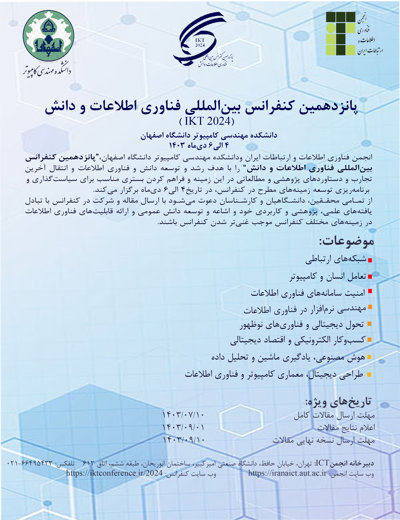0% Complete
Authors :
Keywords :
Abstract :
List of archived papers
Melika Golestanipour - Seyedeh Zahra Razavi - Dr Heshaam Faili
Negar Nasiri - Mohammadreza Keyvanpour
فاطمه الثلایا - دکتر سید علیرضا هاشمی گلپایگانی فاطمه الثلایا - سید علیرضا هاشمی گلپایگانی -
Mohammed ADIL AKABR - Mehdi Hamidkhani - Mostafa Sadeghi
مهدی علیرضانژاد - عمار عبیس حسین المعموری
زهرا عمیقی - مرتضی یوسف صنعتی - میرحسین دزفولیان
Amir Mohammad Kouyeshpour - Hadi Veisi - Saman Haratizadeh
طه رستمی - دکتر سعید جلیلی طه رستمی - سعید جلیلی -
Mohammad Ali Poorafsahi - Hamid Mala
Mohammad-Sajad Kasaei - Mohammadreza Sharbaf - Afsaneh Fatemi - Bahman Zamani




